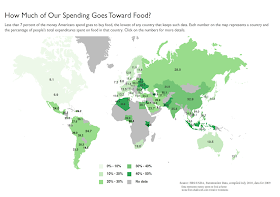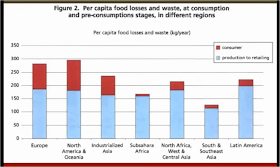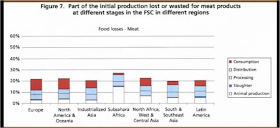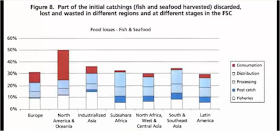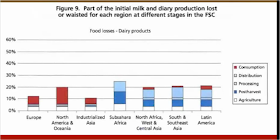 |
| Me at Vallie's age. Living in bliss. |
We live in a country of plenty. I was blessed to have been
born into a family that never worried about hunger or where our next meal was
coming from. As a kid, I’m sure I crossed paths with kids who didn’t know if
there was going to be supper for them that night, but I was oblivious to their
problems. I wish all children could live in the bliss of a childhood I had, but
unfortunately, that is not the case.
In the US, 1 in 5
children are food
insecure, meaning that they lack access to enough food to maintain a
healthy lifestyle. I look at my daughter and it breaks my heart to think about
the parents in my neighborhood who don’t have the means to provide enough food
for their children.
Globally, the numbers are even grimmer. Hunger is the #1
risk of health in the world. More people die from hunger than AIDS, malaria,
and tuberculosis, combined. Every 7 seconds, somewhere in the world, a child
dies from malnutrition. I could go on and on about hunger, but that is not the
topic of this post.
By the year 2050,
it is estimated that the global population will rise to somewhere between 9 and 10 billion people. As people live
longer and more enriched lives, more people will enter the middle class and
will demand more food. It is estimated that the world will need to produce 100% more food than we do today to feed
those people. We are already using most of the land and resources that we have
for food production, so most of that increase in food production (about 70%) will have to come from
finding ways to produce food more efficiently.
Food may become a scarcity.
It is estimated that one
third of the food produced today in
the world is wasted. That is about
1.3 billion tons of edible food wasted or lost every year.
Last summer I attended a conference and a whole session was
devoted to food waste. Three speakers from the meat industry presented some
really eye-opening facts about food waste and what can be done about it. They
included Dr. Brian Smith from Hawkins, Inc., Dr. Brad Morgan from Pfizer Animal
Heath (now Zoetis), and Dr. Benjy
Mikel from Mississippi State University. I wanted to share some of their
information in a post.
In developing countries, edible food is lost mostly during
the early and middle stages of food production, largely due to corruption and
lack of infrastructure. The challenges in those countries are in getting the
food to hungry people in a wholesome manner. Consumers in the developing world
waste very little of the food that reaches them.
In developed countries (USA, western Europe), food is largely
wasted at the consumption stage. Tons and tons of food in these countries is
discarded even if it is still wholesome and edible.
 |
| My grandmother (in pink) with some of her brothers and sister. Part of the Greatest Generation, they did not waste food. |
In
the USA, food waste has increased 50% since 1974. That doesn’t surprise me when
I think about my parents’ and grandparents’ attitudes about food waste compared
to those of my generation. My grandmother was the youngest of 14 children and
was born in the first year of the Great Depression. Do you think she wasted
food? No way.
A few more facts about American food waste:
·
People in the USA waste approximately 1,400
kcal/person/day
·
3,000 lbs of food is wasted every second in
America, enough to feed 650 Americans
·
50% of leafy vegetables are wasted
·
33% of bread is wasted
·
12% of meat is wasted
·
22% of vegetables are wasted
The US could save roughly 2% of its total energy consumption in one year if we stopped
wasting food. That’s roughly equivalent to 300
million barrels of oil.
In
developed countries, we waste food because
we can afford to. In my grandparent’s time, they didn’t throw out food
because it wasn’t as cheap and accessible as it is today. In the US, only about
6.9% of our disposable income goes toward food. In China, they spend 32.9% of
their disposable incomes on food, in Brazil, 24.7%. Some countries are spending
over 40% of their disposable income on food.
If we were spending 6 or 7 times as much on our food, we
would probably be much less likely to waste it, but increasing the cost of food
in this country is not the answer. When you look at individual food stuffs, you
see that cheap foods, such as cereals, have much higher total waste and much
more waste at the consumer level than more expensive foods like oilseeds and
meat. You wouldn’t just forget about those $30 steaks you bought and let them
go bad in the fridge, but a $3 box of cereal is more easily forgotten. Of
course, shelf life plays a big role in food waste, too. Dairy products are
overwhelmingly wasted at the consumer level. I can’t count the times I’ve
poured 1/3 to ½ of my gallon of milk down the drain because it spoiled before
we drank it.
Not only do we lose resources that were used to produce food
that was eventually wasted, wasted food creates another problem in that all once-food,
now garbage must be transported and disposed of somewhere. Food waste in
landfills contributes to methane production and greenhouse gas emissions. According
to a story
by NPR, food accounts for 20% of the waste created in New York City. It
costs $100 million per year to haul it away.
What can be done?
Dr. Mikel told us that the world produces enough food to
feed everyone, even the 9 or 10 billion people that will be here in 2050. We
can work through programs like Heifer
International and USAID to help people
in the developing countries to have access to enough wholesome food.
AND, there are lots of ways to change our habits in this
country and be conscious about how much food we are wasting.
·
Controlling portions and minimizing food waste
at home is the first step.
·
Make a
shopping list based on what you
ate since you went to the store last.
·
Know how much you can eat at restaurants and
don’t be afraid to share a meal. In
the US, we tend to control our intake and overeating by leaving food on the
plate.
·
Make it a habit for small kids to share a meal,
either with you or each other. (This has been a new challenge for Vallie. She
is very opinionated about her meals.)
·
Understand use-by
and expiration dates. Most of the time these dates are just about food
quality and not food safety, meaning that the food may lose a little taste, but
it is still safe to eat. (For meat and dairy items, I would still stick close
to the freeze-by dates.)
·
Do some research on proper
handling and storage times for perishable foods. The internet is full of
good advice.
What is being done on
a corporate level?
ARAMARK – a company that supplies meals to students in
dining halls has eliminated trays from its dining halls on several campuses.
Remember that students pay to eat at dining halls by the meal, not by the food
item, so there is not a financial incentive to limit the food they pick up.
When they were not provided trays, students picked up less food. They were
probably still free to go back for seconds. Sounds like a small change, but at
the University of Alabama, they saved 6,000
pounds of solid waste per week by eliminating trays. ARAMARK has
implemented the program at 300 universities and saved over 15 million pounds of
food waste. They also saved water and energy by not washing all those trays.
TESCO
– a grocery store chain in the UK has taken several steps to help reduce food
waste. They changed the buy-one-get-one-free coupons to a buy-one-get-one-free next time coupon. Same savings for the
consumer, less likelihood of food being wasted. They have also implemented a
‘fresh indicator’ label on some of its food products to help consumers know
when the food is ok to consume. This label is based on time, temperature, when
the food was opened, and several factors and lets the consumer know whether the
food is fresh or not based on a traffic light label of green, yellow, or red.
Some countries are
taking an active role in helping to reduce food waste.
·
The United Kingdom has website to help consumers
control food waste called lovefoodhatewaste.com
as part of their Waste & Resources Action
Program (WRAP)
·
South Korea is the world leader in lowering food
waste. They accomplished this by taxing people for food waste. Consumers are
required to pay a fee for food waste. This measure has reduced food waste by
20% and saved $4.3 billion in US dollars.
When we think about food waste on a global scale and we see
figures like 1.3 billion pounds of food wasted, it seems overwhelming.
When I open my fridge and see forgotten leftovers, a wilted
bag of salad, and expired milk, I feel like a failure.
I am trying to approach food waste like I do any bad habit.
Little by little, I try to get better.
Some days, I will falter, but tomorrow, I will try to be better. Just
being conscious of the issue will be a big help.
What are some other steps we could take to waste less food?
I have a few more great links and figures:
My friend, Dr. Jude Capper, of Bovidiva
wrote a great post just yesterday on this same topic. Her insight is great.
The Food Network did a great special on Food Waste called The
Big Waste. It is definitely worth watching!
I thought several of the figures from Dr. Mikel’s talk about
where food is wasted were very informative, so I’ve included them below:
